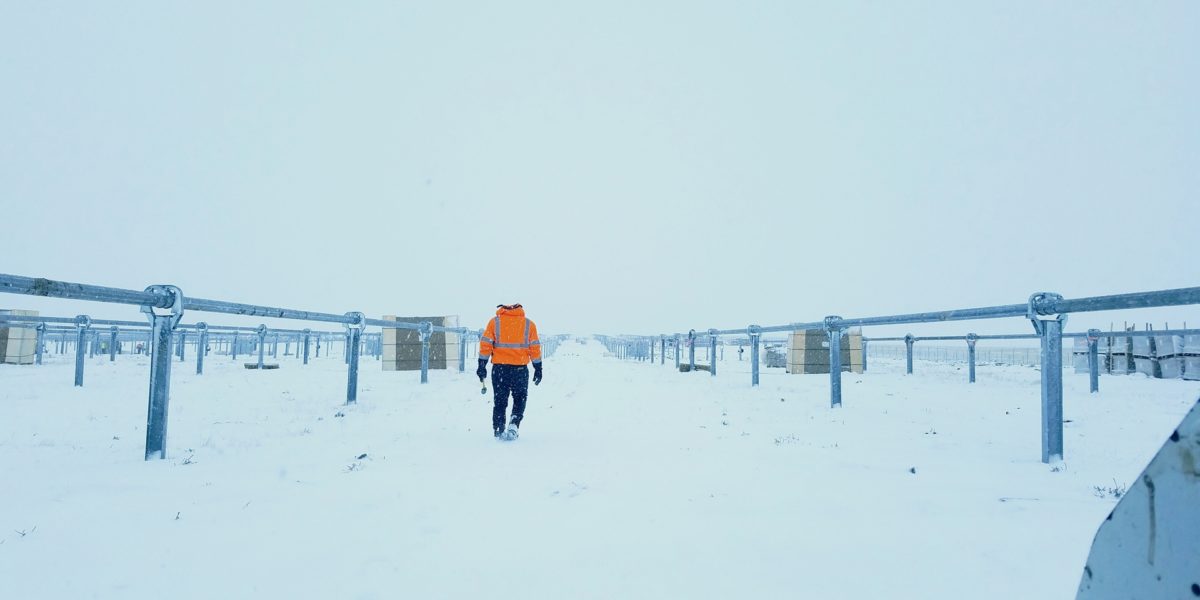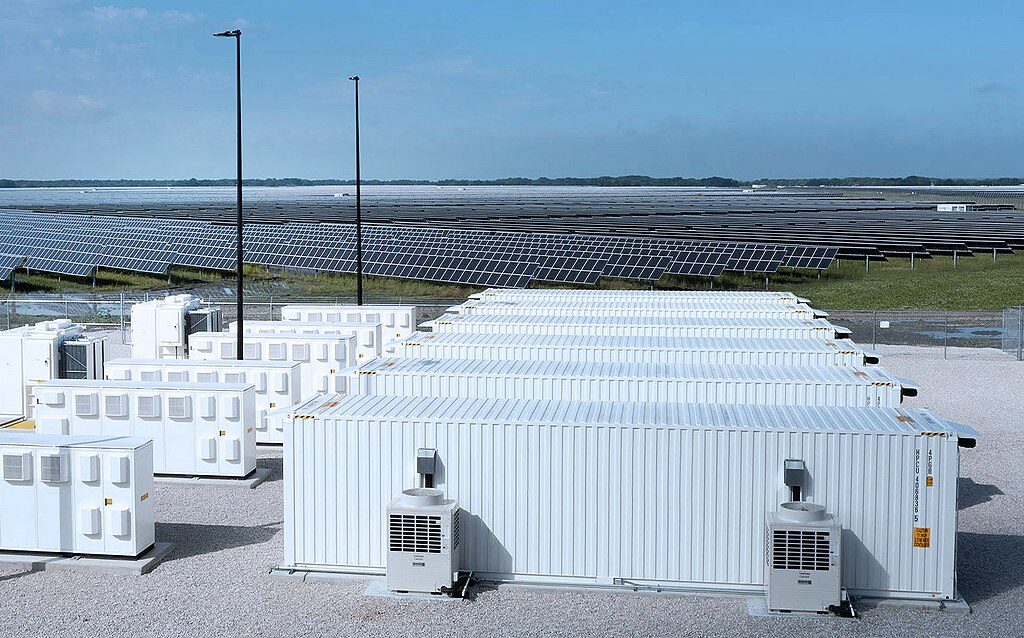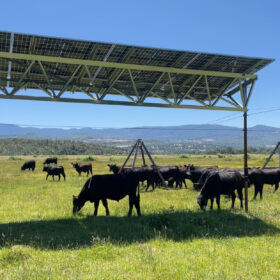If you’re going to last decades while sitting in the ground, you need the strength to deal with the corrosive effects of chloride in the soil. As the map below notes, all soil has some level of corrosiveness across the United States, and your ground mount solar installation will have to deal with it.
An analysis by engineering firm KiloNewton of 65 and 80 ksi (edit: 1 ksi = 1000 pounds per square inch) W6 wide flange steel beams (6” I-beams), versus industry standard 50 ksi steel, found that less steel could be used – saving $2,000-$10,000/MW – while still offering the same anti-corrosive strengths needed. Additionally, the analysis found that there are other cost reduction potentials in shipping, and onsite logistics using lighter materials, and that the potential cost savings increases to scale with longer piles.

The company’s white paper, Resilience of High-Strength Steel Wide Flange Beams to Corrosion in Solar Ground Mount Systems (PDF), focused on three different material strengths for the study: 50 ksi (considered to be standard in the solar industry), 65 ksi, and 80 ksi. The study chose specifically not to analyze steel galvanized with a zinc coating, as it was suggested that this non-galvanized would make for a more conservative analysis. If there was a galvanizing coating, then the higher strength – and lower material – product would hold its strength related qualities for even longer.
Kilonewton was commissioned to evaluate this patent pending technology. Tom Russell, inventor, patent applicant and Attala Steel Industries, Russell’s exclusively designated licensee to supply North America, jointly commissioned the study.

The above image shows the flexural strength of the standard 50 ksi steel product, first starting with a heavier beam on the far left (6 x 25), and through much smaller (6 x 7) beams on the far right. In many cases, at the higher corrosion rates, the smaller size beams are reduced to half of their original capacity or become so slender that they cannot be used at all.
However, the higher strength materials (below image of 80 ksi steel) retain capacities far greater than the lower strength I-beams. Note that the beam size on the far left of the below chart (6 x 16) has the same strength as the third sized rating in the 50 ksi chart above.

The report concludes that in situations where specified 50 ksi posts are heavier sizes (>9 lb/ft), there is a significant cost savings potential, ranging from $2,000-$10,000/MW, depending on the sizes and quantities of the foundations required. The general trend in cost savings aligns with the size of foundation, with more potential as the posts get heavier.
The document also reminds us that transportation costs are a significant factor that will also be affected by using higher strength materials to reduce section size. Since the cost to transport one pound of steel to site is the same regardless of grade, whatever the percentage reduction of section size would be the additional percentage savings in freight costs. Thus, if grade 80 steel was utilized and that resulted in a 15% reduction in section size, then the freight costs would also be reduced by approximately 15%.
This content is protected by copyright and may not be reused. If you want to cooperate with us and would like to reuse some of our content, please contact: editors@pv-magazine.com.








Great article. Any idea where steel from Valmont Industries fits into this?
Pretty sure ksi doesnt stand for kilonewtons per square inch, we don’t mix metric and English units like that. In my experience (as a civil engineer) ksi = kips per square inch. (Kip = 1000 lb force). MPa is the metric equivalent of ksi. …this has already happened with rebar, btw…grade 40 has pretty much disappeared because everyone uses (at least) grade 60 in their designs.
There is a small but significant typo in the second paragraph.
The term “ksi” refers to 1000 pounds per square inch, or 1000 psi.
The grades of steel described have a minimum yield strength of 50,000 psi, 65,000 psi, or 80,000 psi.
While the term “kiloNewton” is a metric unit of force, I believe in the context of the article it refers only to the name of the company performing the evaluation.
– Danny Schaeffler
Engineering Quality Solutions, Inc. and 4M Partners, LLC
http://www.EQSgroup.com and http://www.Learning4M.com